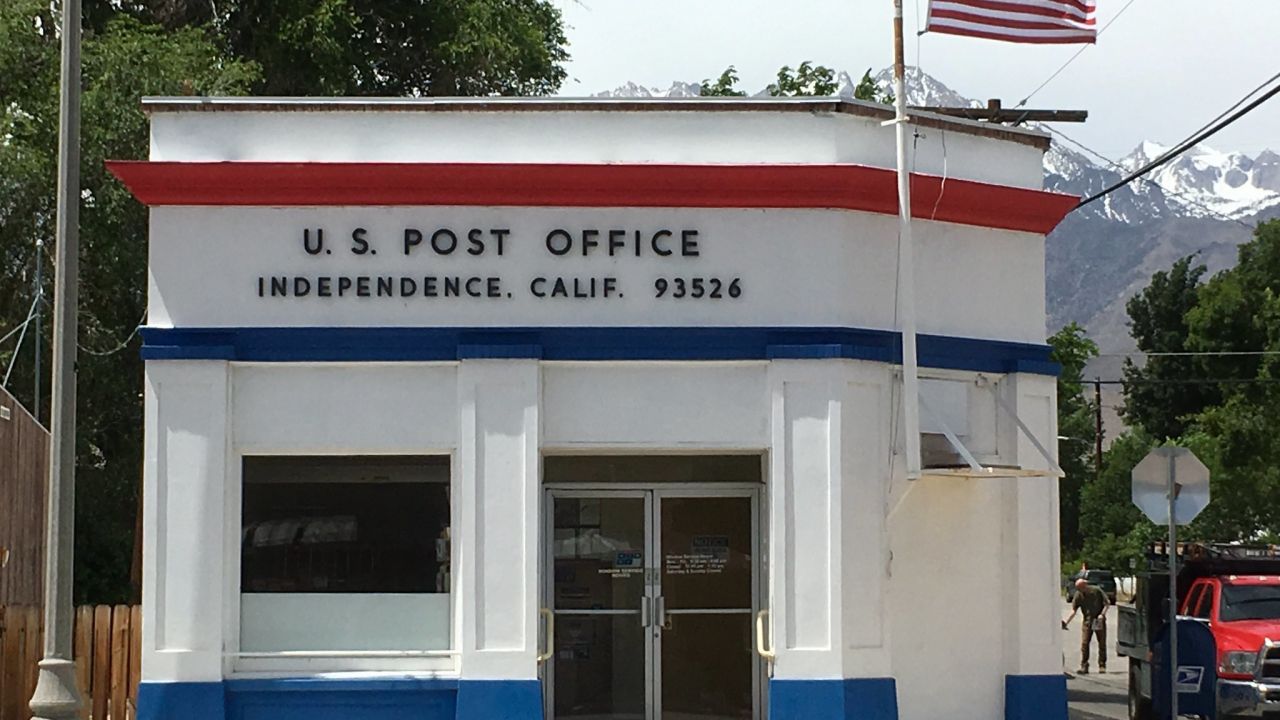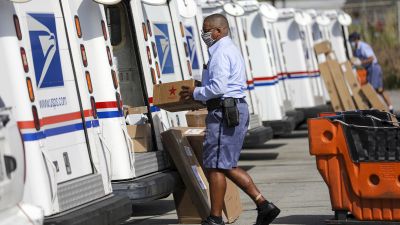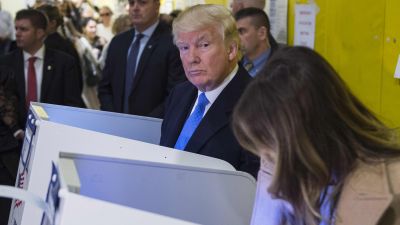
(Credit: Gilbert Mercier | Flickr CC 2.0)
Even before the coronavirus pandemic, the United States post office had been atrophying from financial turmoil. Over the past decade, post offices have been closed across the country, rural mail delivery is stretched thin, and thousands of post office workers’ positions have been eliminated.
The outgoing postmaster general recently warned that without immediate support the agency could run out of funds within the year, and in that case might need to shut down.
Now, as the nation heads toward an election where millions more Americans are likely to vote by mail, the agency’s crisis could threaten the democratic process. The question for voters is not whether they will be able to go to the ballot box, but whether the Postal Service will be able to bring the ballot box to them.
Yet it has faced outright hostility from Donald Trump, who has repeatedly criticized its business agreement with Amazon, which allows the e-commerce giant to deliver its packages at a discounted rate. Trump has promised to block aid for the agency unless it quadruples its prices for package shipping, which could cause the company to take its business elsewhere.
The Postal Service’s struggles began in the early 2000s. In 2005, Congress imposed an unprecedented austerity measure on the agency which required USPS to pre-fund retirement benefits 75 years in the future, including for employees who have not even been born yet. No other government agency or corporation operates in such a manner, and the move left the USPS woefully strapped for funding.
That crisis deepened with the 2008 recession. At first, mail volumes remained high in the early 2000s, even amid the rise of the internet, but the economy took a steep downturn, dealing a huge blow to the advertising mail that makes up the USPS’s bread and butter. Overall mail volumes fell by about a third over the following decade, and because the agency doesn’t receive any taxpayer money, the decline placed it in uncharted financial waters.
In the absence of legislative action the USPS has been forced to cut costs where it can, eliminating more than 200,000 staff positions. This has strained the agency’s workforce, especially in rural postal stations and in cities that see large numbers of Amazon packages.
When the Covid-19 virus started to spread through the country’s major cities in March, the agency’s labor crisis went from bad to worse. Thousands of postal workers took emergency leave to quarantine after contracting the virus or to care for their children. These widespread absences have led to reported delays in mail delivery in Ohio and Michigan, key swing states in the upcoming election.
“I’m concerned,” said the Democratic representative Gerry Connolly of Virginia, who has spearheaded legislation to aid the Postal Service in the wake of the pandemic, including by offering it a $25bn infusion of cash. “I don’t think it’s going to cease operations, but [the crisis] could affect operations – there could be delays, there could be interruptions in delivery, there could be layoffs.”
Meanwhile, Trump has secured almost total control of USPS leadership. Last month he appointed a Republican fundraiser, Louis DeJoy, to replace the outgoing postmaster general, Megan Brennan, and the following weeks saw resignations by the last two senior members of the USPS governing board, one of whom had overseen the management of mail-in voting, which Trump falsely attributes to the risk of voter fraud.
The leadership of the Postal Service will soon consist entirely of Trump appointees, and the appointees seem willing to give in to Trump’s demands: the board of governors announced in late May that it would review its package delivery agreements with Amazon.
Steve Hutkins, a professor at New York University who runs the blog Save the Post Office, said the consequences of Trump’s takeover could go far beyond Amazon. Hutkins said he was concerned DeJoy would implement proposals from a 2018 Trump administration report, which suggested the USPS should end Saturday delivery, close more stations and reconsider delivering to remote areas. That would affect November’s election.
“If [DeJoy] were to do anything like reduce the frequency of delivery, change mail processing standards to slow down delivery times, and begin mass closings of post offices, then we could easily be in for significant problems at election time,” he said. “There’s no need to do these things even in good times. They would be disastrous at a time like this.”
There’s another reason why Trump might not want to bail out the Postal Service: voting by mail, which he has repeatedly a criticized. About 30 million voters used such ballots in the 2016 election, and four states now conduct their elections entirely by mail. Millions more may do so amid fallout from the coronavirus pandemic.
The USPS deems absentee ballots “essential mail” and prioritizes delivering them over other items, but Connolly and other Democrats still worry that even those deliveries will be lost or delayed in the absence of a bailout.
Even so, the biggest threats to a fair election are the routine delivery delays and infrastructure breakdowns that the coronavirus has exacerbated, as they were in Wisconsin’s recent primary election.
“You can have an election that’s fast, cheap or accurate, and you get to pick two,” said Tammy Patrick, senior adviser for elections at the Democracy Fund. “If you want it to be cheap and you don’t fund it fully, it’s not going to be fast. If you want it to be cheap and fast, then it’s not going to be accurate.” The Postal Service is more than capable of delivering every ballot, she said, it’s just a question of when it delivers them.
The Senate will almost certainly pass some form of aid for the Postal Service in the months to come. But how the USPS will handle the challenge of the 2020 election, especially if a second wave of the virus hits the country, is an open question.
The contest for the electoral college is likely to hinge on a handful of states, some of which, like Florida and Arizona, have high rates of mail-in voting already.
In 2016, furthermore, several swing states were decided by razor-thin margins –Trump won Michigan by 13,000 votes, while Hillary Clinton won New Hampshire by 2,700 votes.
If the race proves to be similarly close this time around, it might take days or weeks for the public to figure out who will control the White House – and if the Postal Service proves unable to handle the new demands of mail-in balloting, the legitimacy of the election might be in doubt.
This content is part of our partnership with The Guardian’s Fight to Vote





